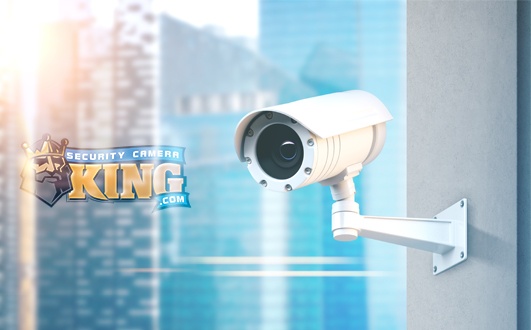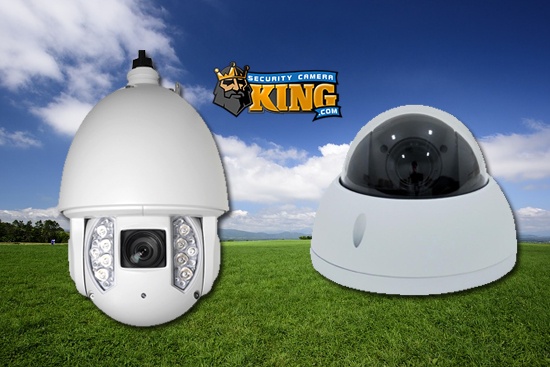Digital Vs Optical Zoom
Security Camera king carries CCTV cameras of many types, and we know sometimes it can get confusing the difference between digital vs optical zoom.
Lets talk first about what types of cameras we carry, and how you can make herds or tails of digital vs optical zoom. First, know that we’re referring exclusively to CCTV cameras. While some of the topics we might discuss here today overlap with regular cameras, like those for photography or video capture for filming movies, television, and documentaries, just know were only referring to CCTV. So what is CCTV? CCTV stands for closed circuit television. Closed circuit means that the signal is routed only to the devices that utilize is and have access to it, and not open broadcast for access to anyone. This is important because unlike radiational television broadcasts, CCTV is designed for security cameras and so keeping the footage private is imperative!
CCTV systems are usually operated by on site security guards interacting with a central station, connected to a monitor or TV display. This allows them to utilize and interact with any camera at the location in real-time. They can use the recorder’s features to change camera views, view multiple cameras, play back footage, search for AI results and more. CCTV has a come a long way, and there are two main types of systems you’ll find at a location. One is a COAX camera system, and the other is IP. we wont spend too long talking about the differences, but it helps to know a bit about it for the discussion on digital vs optical zoom. COAX cameras utilize a digital signal, but its transmitted over an analog cable. This is because older COAX systems were not digital, but rather truly analog. Nowadays they can utilize high resolutions due to their new signal type.
The other type of systems are IP camera systems. IP cameras utilize networking technology and communicate over computer networks to a recorder called an NVR. One of the key differences is that much of the processing is done on the cameras itself in IP systems, IP cameras tend to have their own direct menus and can be adjusted and tweaked in ways that tend to be not only more convenient , but significantly mroe granular level control than COAX cameras. They both have their place, and one isn’t truly better than the other.
Both types of camera systems can utilize both Digital and optical zoom options, but might do so in varied ways. Its important to understand the difference between digital vs optical zoom too, so well start there.
Digital zoom is a feature of the recorder itself. That’s important to understand, digital zoom can be done after the fact and essentially is a stretch and cropping of an image. If I take an existing photograph, not even a moving video, just a single photograph that’s already been taken, there is no way to “zoom” into that photograph without some quality loss. This happens because digital images, the kinds taken by modern cameras and the same kind taken by both COAX and IP cameras. These images are arranged in pixels. Pixels are small dots that make up the image, as describe before. Once an image is created, you cannot add more pixels to it. The only to to enlarge a section of it, is to stretchy the existing image and there will always be significant quality loss scaling with how far you zoom into the image.
This is digital zoom, and while its useful it is not the same thing as optical zoom.
Optical zoom does not occur after the image is already recorded, like digital zoom does. Optical zoom is a true zooming in of the image. It is accomplished on a camera itself, and is done by using what is called a motorized varifocal lens. Varifocal lenses can adjust themselves, like a magnifying glass, so that the image that’s being taken in is actually one from farther away. This means that the initial recording is recorded at the full resolution, and this occurs at the zoom length.
The motorized portion, means that the varifocal lens can be operated remotely, from a control device such as the recorder or actual in line Zoom control device. This is because the lenses have a motor which can cause the lenses to adjust without manual or hand adjustment (as was the case on older cameras!).
The difference between how COAX and IP systems utilize this feature is in the control. The same optical zoom motorized varifocal lenses are working the same way in both coax and IP camera’s however, with coax cameras you need to own a recorder capable of control over coax- like our elite DVRs. This means from the cameras PTZ page on the recorder, you can control the zoom without purchasing or using a real, in line PTZ controller device- another piece of hardware.
With IP cameras the control can be done from the IP cameras menu directly and/or the NVR connected to the camera. This allows you the ability to set the camera up both before and after it is paired to an NVR
In Digital Vs optical zoom , the difference is in the capability and quality. Digital zoom is more of a last ditch, post recording method to attempting to see close into existing footage and optical zoom is a way to zoom into a location before the recording to ensure it is recorded at full quality using real varifocal lenses.
For any other questions please call SCK at 561 2898 528 to talk to a sales pro, and for now have a great day and stay safe!
5612885258!
Thanks for joining us today as we discussed Digital Vs Optical Zoom! If you need help choosing, please call the number above or visit the live chat by clicking the icon at the lower right corner of the main page! Don’t forget to like and subscribe to the video channel, and until next time- STAY SAFE!
Find us on:
Facebook | Twitter | YouTube
Related Media: Solar Powered Security Camera System












